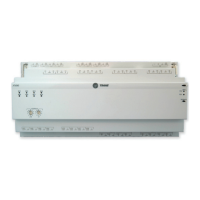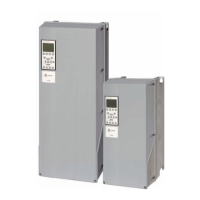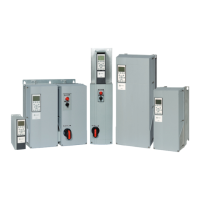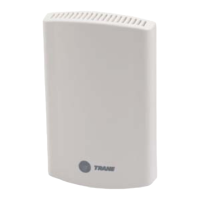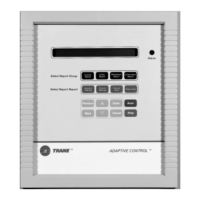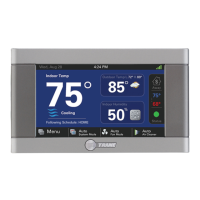CNT-SVX09E-EN 25
Troubleshooting
Troubleshooting Universal Input
If a universal input value appears incorrect, follow the troubleshooting steps in Table 16 and
Table 17.
Table 16. Troubleshooting universal inputs using the device plug-in
Step Number Action Probable Cause
Step 1
Connect the Rover service tool to the LonTalk communication link, start th
e Rover service tool,
and select the MP503 from the Active Group Tree. The device plug-in for the selected MP503
will appear with the Status screen displayed in the workspace.
For more details, refer to the Rover Operation an
d Programming Guide (EMTX-SVX01).
—
Step 2
On the Inputs tab, check the value of each universal input. For
thermistor inputs, the reading
is shown in both degrees (Fahrenheit or Celsius) and Ohms.
If the input does not show the expected value, proceed to the next step to verify the input
configuration.
—
Ste
p 3
Select the Configuration button, then select the Inputs tab to view the Input Type.
If it is not correct, select the correct type from the
drop-down
list. Select the Download button,
then select the Save button.
If the configuration is correct for the input you are troubleshooting, proceed to Table 17.
Input configuration
problem.
Table 17. Troubleshooting universal inputs using a meter at the module
Step number Action Probable Cause
Step 1
Perform the initial troubleshooting step
s described in Table 13, p. 23 and verify that general
board operation is functioning.
General board
problem.
Step 2
Inspect the wiring. Is there a good connection between the wire and the terminal blocks? Look
for sh
orts or opens. Pay particular attention to wire splices.
Wiring problem.
Step 3
What type of universal input are you investigating?
• For thermistor, proceed to Table 18, p. 25.
• For binary, proceed to Table 19, p. 26.
• For 0–20 mA, proceed to Table 20, p. 26.
• For 0–10 Vdc, proceed to Table 20, p. 26.
—
Table 18. Universal input troubleshooting with a thermistor input
Step Number Action Probable Cause
Step 1
After following the steps in Table 17, use the volt meter (set to read dc voltage) to measure the
voltage across the
terminals for the input. Verify the voltage falls into the gray area of the curve
in Figure 11, p. 26 for the current temperature.
If the voltage reading is not appropriate for the curr
ent te
mperature, you have a sensor wiring
problem.
If the voltage is correct for the current temperature, proceed to the next step.
Sensor wiring
problem.
Ste
p 2
Disconnect the sensor wires from the input terminals. Use the vo
lt meter (set to read dc voltage)
to measure the voltage across the terminals for the input.
The voltage should be 4.75–5.25 Vdc (see Table 22 on page 27). If the voltage is not in that
range, the
MP503 has a circuit board problem.
Circuit board
problem.

